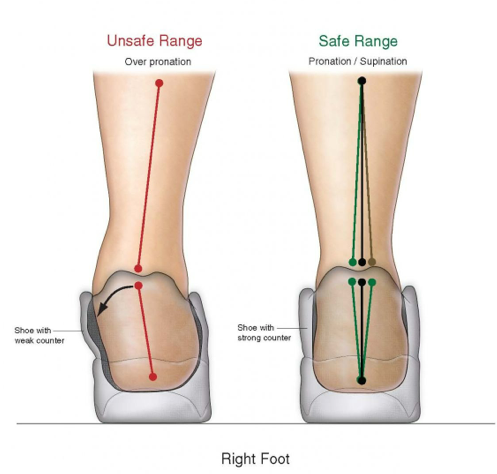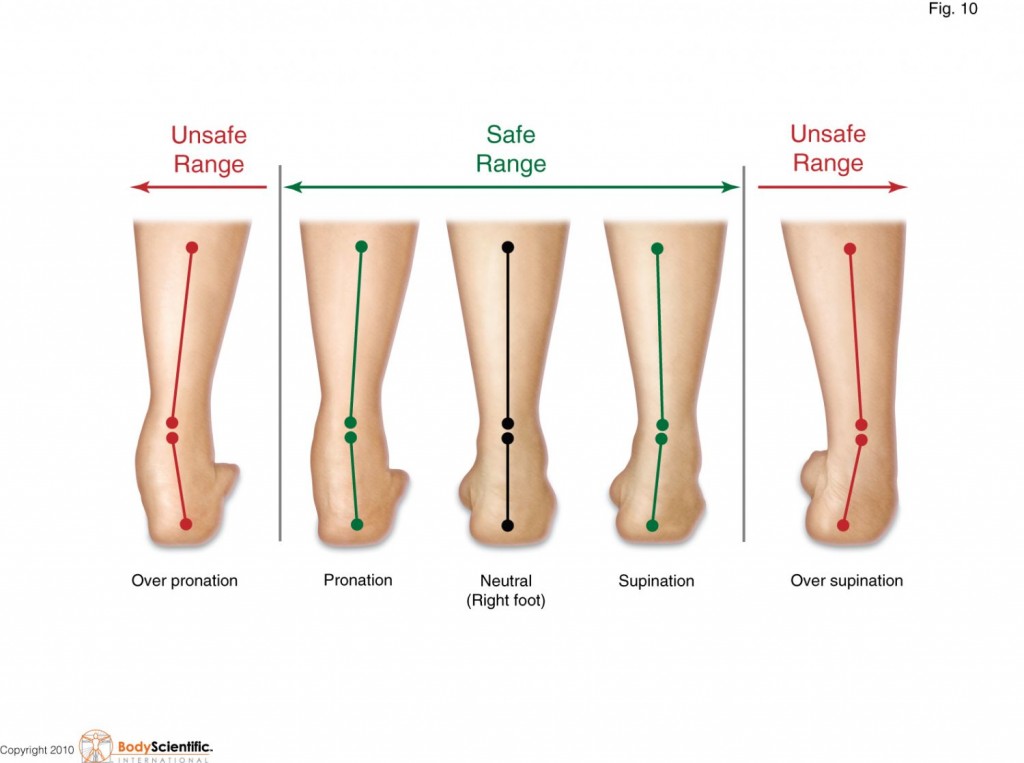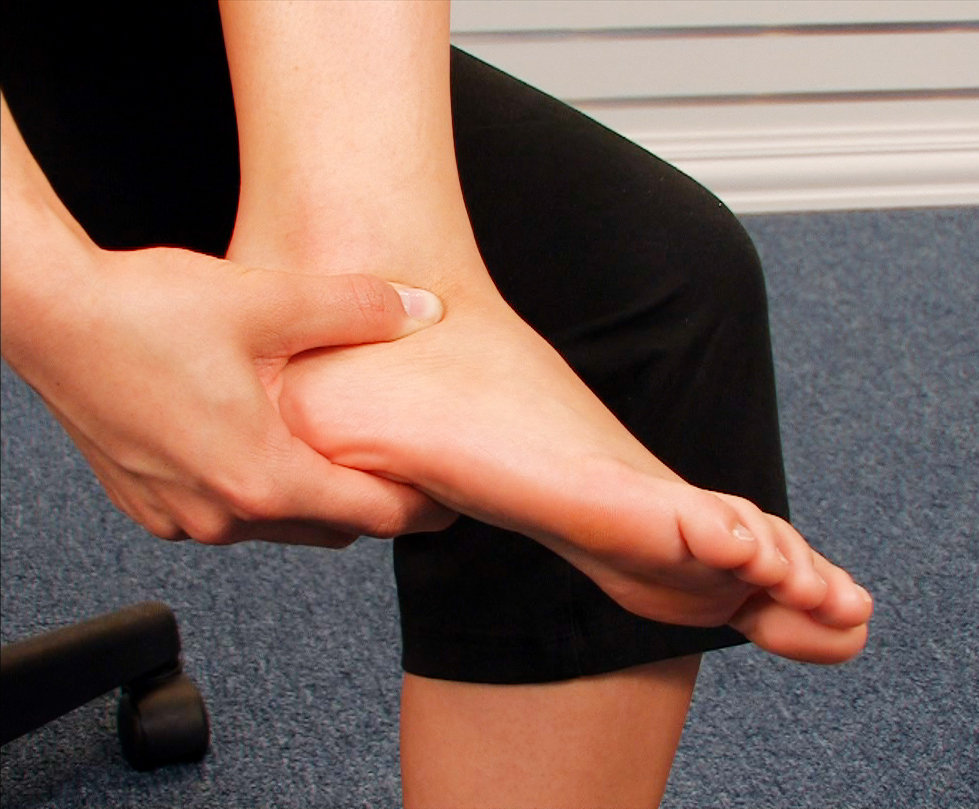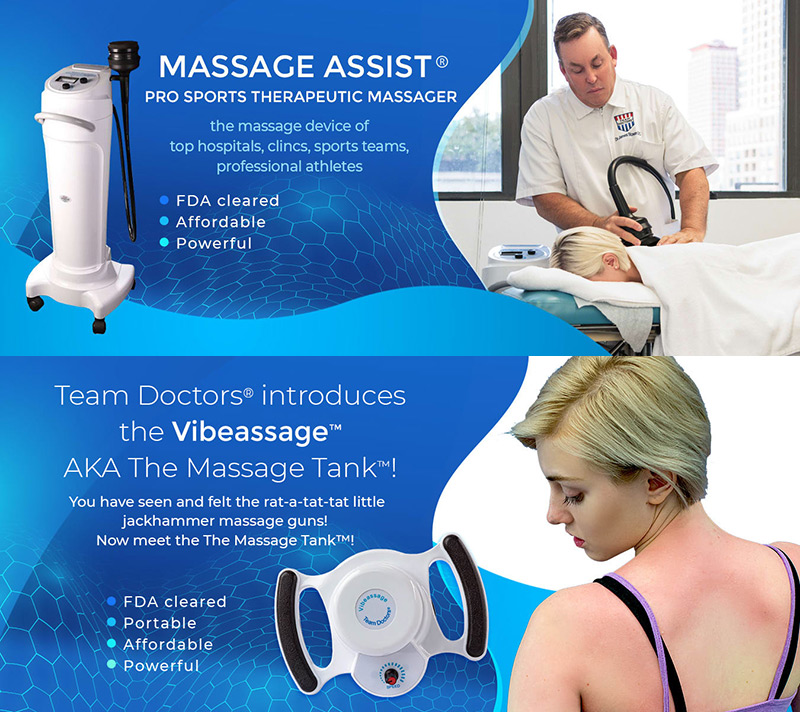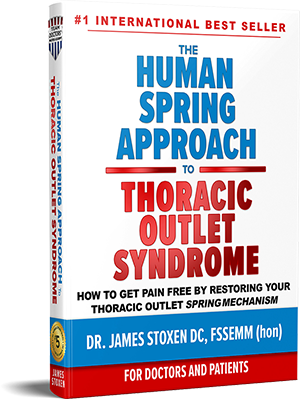Heel Pain ICD-9 719.47 Heel Spur ICD-9 726.73
I Have Heel Pain. Should I Give Up On Barefoot Running?
Tips For Better Health
Ask the doctor, Dr. James Stoxen DC
Whatever your level of running, regular racing, fitness running, or occasional jogging, aches and pains are a part of the sport. While aches and pains should never be ignored, some are more significant than others because they signify chronic running injury.
The most commonly injured areas include the arch and heel region, lower leg, knee, Achilles tendon, and forefoot.
Running injuries are usually caused by muscle overuse, faulty biomechanics, and lack of flexibility.
Pain in the heel or pain in the arch area can often lead to plantar fascitis, or heel spur syndrome.
This is an inflammation of a fibrous band of tissue, which stretches from the heel to the toes. There may be pain in the morning, pain after rest, and pain after running; the worst is pain when you wake up and pain at the start of a run.
Chronic plantar fascitis may lead to the formation of heel bone spurs.
You may be wondering to yourself why do my heels hurt? or do I have a bruised heel?
Heel pain, not to be confused but can feel like hell pain and having a swollen foot or swollen feet.
The pain symptoms can be quite severe and disabling in some cases.
What are the Causes of Heel Pain?
- The cause of the heel pain can be corrected easily with a correction of your running form and technique.
- Heel pain is generally the result of a problem in the way that you are walking (your gait) that causes you to place too much stress on the heel bone and the soft tissues surrounding your heel (heel tendons).
- Heel pain can also be caused by wearing poorly constructed or poorly fitting shoes, foot injury, broken foot, ankle injuries, or heel bruising.
- Heel pain may be caused by being overweight.
I will explain these changes more in detail in this post.
If you cannot reduce the pain with the recommendations I am making in your running form and technique, you may need see a foot specialist to review your heel symptoms, have a full examination, and possibly x-rays to determine the cause of your heel pain and to go over appropriate treatment for heel pain.
Heel pain is commonly associated with plantar fasciitis.
Plantar fasciitis, inflammation of the connective tissue on the bottom of your foot. The characteristic of this condition is pain in your heels first thing in the morning when you put weight on your feet.
The fascia is a band of tissue that runs from the base of the toes to the heel, along the arch of the foot. Heel Pain can also be caused by heel spurs, which occur when the plantar fascia pulls on the heel long enough to cause the bone to grow abnormally.
I have a very detailed article on plantar fasciitis and heel spurs in this blog that you need to read to really expand your knowledge of this condition so you have the best shot at eliminating it.
Heel Spurs – Self Help Tips, Treatment and Prevention From The Barefoot Running Doctor at Team Doctors
Another ailment, nerve irritation, is called calcaneal nerve entrapment. Pain on the back of the heel stems from Achilles tendonitis, or when the large calf muscle tendon gets inflamed, or swells, where it attaches to the heel.
The relationship of muscles and joints to how you run is called biomechanics.
Faulty biomechanics greatly increase your risk of injury. The most common example is over pronation of the joint below the ankle (the sub-talar joint), which may be noticed as partial or complete collapsing of the arch and rolling in of the ankle as your foot lands. I will discuss this further in the article below.
In this post I will answer a question regarding Heel Pain and a heel injury during running and weather or not the patient should give up on barefoot running.
You asked the question, “Did you start off too strong?”
My answer to that question is…. Not exactly…
Why do I say that?
You started off at the right pace for your right foot but too fast for your left foot? NAHHHH!
If you SIMPLY started off too strong you would have symptoms and signs on both the right and left foot. That is a simple deduction because it seems like your right foot can handle the force of the landing and the amount of landings but your left foot, cannot.
So, we deduct your left foot cannot handle the force of the impacts (weak landing mechanism) or it’s locked somewhere not allowing the force to be distributed across the 33 joints or your form and technique is off or all three, maybe something unknown we can only determine after careful examination. Lets face it, the docs here are doing their best with minimal information.
We need some WIGGLE ROOM here. I am a fan of the blue wiggle. 😉
Ok lets go with common sense advice that could help you or anyone else across the board here. Maybe your left foot has one or more of the 33 joints locked.
ITS STIFF IN SOME AREAS AND LOOSE IN OTHERS AREAS
The locking of any one or more of these joints does not allow the force of the landing to spread over the 33 joints for a smooth landing. This can force an excessive movement of the subtalar joint or as we say in medicine, hypermobility of the subtalar joint. Excessive movement in a joint can cause pain. IT COULD BE THAT BECAUSE THAT IS COMMON AND MAKES SENSE. Your foot has been in a shoe for years.
When you take any body part out of a brace it is weaker than it was when training without the brace—
They call this a ‘PRINCIPLE OF TRAINING’
That is how we base our coaching or doctoring advice on. I will chose principles over studies performed on SHOD ATHLETES when determining what to do with BAREFOOT ATHLETES.
SELF HELP – MUSCLE FOOT LOCK:
When the foot moves abnormal, not according to the way it was designed, the brain senses this and creates what we call “tonic (constant) protective spasms” That means it stiffens the area. When you are running you need the foot to be a spring mechanism to deform it’s shape, to load the force of the landing into the mechanism, store the energy in the deforming process then reform back to its EXACT original shape releasing the energy. (see illustration above)
When the mass hits the foot with the heel first the “landing muscles”of the pereoneal, soleus and tibialis posterior lower the forefoot down similar to when you bench press. The weight is lowered into position then we push up. That landing can be smoooth, aligned and springy when these muscles are working correctly and all the joints are released to allow this mass to enter into the spring safely.
When the foot is stiff, when the muscles that lower the foot eccentrically into position are strong (landing muscles) then you are in a good position to spring off the ground. If the foot (spring) is preloaded with muscle tension and or the muscles are weak, then the abnormal motion occurs to move around the locked weak mechanism or the path of least resistance.
We cannot examine you so we have to go with statistical probabilities to see if we can get closer to the target so maybe we can help you with the answer to this post. Statistically the tibialis posterior is the muscle I find to be the most commonly weaker than others, which means that the foot is weakest in absorbing the forces of the landings. The heel rolls out of the safe range inward. That over rolling outside the safe range makes the subtalar joint hypermobile or stretches the joint.
What you seem to be describing is the front of your subtalar joint (the point at the bottom of the heel at the arch) and the rear of the subtalar joint (the area in front of the Achilles tendon in the fleshy part behind the heel) this is a common place for pain. This is a common occurrence.
If we release the stiffness from the surrounding joints, more forces can be taken up in these joints lessening the stress on the subtalar joint.
The most common muscles to stiffen in my 26 years of examining gait, manually checking and manipulating, rehabilitating patients and athletes are:
- The muscles under the second toe
- The muscles under the big toe
- The muscles on the medial or inner edge of the big toe.(see below)
- The muscles between the first and second toe
- The tibialis posterior muscle
Watch the Video Tutorials below of how to release the foot with the deep tissue techniques that I developed, which work great!
I did these tutorials in Malaysia last summer (2011) after a barefoot race and they are great.
Be sure to start on Video Tutorial # 77 and go through Video Tutorial #89:
Video Tutorial #77 How to Self Adjust Your Toes
Video Tutorial #78 Deep Tissue Treatment Of The Knee Popliteus Muscle
Video Tutorial #79 Deep Tissue Treatment Of The Gluteus Medius Muscle of the Hip
Video Tutorial #80 Deep Tissue Treatment Of The Subtalar Joint (The Inside)
Video Tutorial #81 Deep Tissue Treatment Of The Ankle (Subtalar Joint Outside)
Video Tutorial #82 Deep Tissue Treatment Under The Big Toe And Second Toe
Video Tutorial #83 Deep Tissue Treatment Above The Big Toe And Second Toe
Video Tutorial #84 Scissor Stretching Of The Feet
Video Tutorial #85 Great Stretch For Mortons Neuromas And Narrow Heels
Video Tutorial #87 Deep Tissue Of The Ankle Mortise
Video Tutorial #88 Stretching Of The Foot While Sitting At Your Chair
Video Tutorial #89 A Stretch To Increase The Flexibility Of The Arch Of Your Foot
Now on to the tougher part…….
SELF HELP – JOINT FOOT LOCK
What I recommend for those who are untrained in foot manipulations is first work on the areas of pain with deep tissue then wiggle loose the 33 joints of the foot the best you can. When I manipulate a stiff or locked foot its like taking a piece of frozen steak out of the freezer and trying to thaw it out with my bare hands. When people watch me do this they are a bit shocked at the sheering force it takes to get the joint play back in the foot. However, I remind them that the human foot can take force. For example if you are 150 pounds running full speed it could be 450 – 600 pounds of force on one foot.
CLICK HERE TO WATCH HOW TO WIGGLE LOOSE THE 33 JOINTS OF THE FOOT
RUNNING FORM AND TECHNIQUE
If your running form and technique is off, your joints will be effected. You never talk about that but obviously this is important. You can say that you work on your running form and technique but you really dont know what is going on unles you evaluate it. What I have found to be the best way to evaluate it is to get a simple Flip Video camera or similar and videotape yourself running. I did it with myself by having someone in the back of an suv while I ran behind A truck. We brought the video home and put it in the computer and moved the curser across to evaluate the movement patterns of my form and technique frame by frame. You should do that. Then you will get a huge education on how your human spring mechanism is taking up the forces of the landings.
Move the curser slowly to see the orientation of the ankle over the foot to see the alignment of the ankle. You should see the alignment is straight. Take a video of your running (must be barefoot) with NO minimals no shoes and look at the way your left foot lands. (Im a little bloated here 🙂
- Is there a difference between your right and left foot landing?
- Is the foot landing with the second toe towards the target?
- When your bodyweight is over the foot is the ankle straight or collapsed?
- Do you land on your heel or mid-forefoot?
You can even post this video on youtube and send us a link and we will evaluate it for you on video and post it back up here for you and others to learn from.
In the meantime review the video tutorials to release the spring mechanism of your feet, ankles and lower extremities.
HOW LONG DO YOU REST TO HEAL?
Rule of thumb
If you have a sprained wrist it’s a minimum of 2 – 3 weeks for the inflammation, the sprained ankle is a minimum of 2 – 3 weeks, the sprained subtalar joint is 2 – 3 weeks. You should not be running on a sprained anything.
JUST BECAUSE YOU HAVE NO PAIN IN THE LEFT FOOT DOESN’T MEAN RUN DOWN THE ROAD BAREFOOT AGAIN
Why can’t the left foot handle the landings? Figure it out……
- No, you don’t quit running
- No, you don’t quit barefoot running.
That is not a winning attitude.
Figure this out and get it together. You are trying to reverse the negative effects of exercising with a brace-binding device on your joints so…
YOU CAN RECLAIM WHAT YOU COULD DO EASILY AS A YOUTH. RECLAIMING YOUR YOUTH IS WORTH THE EXTRA WORK.
Running involves tendon elastic recoil. Tendons and other connective tissue demands 20 weeks to strengthen, while muscles can strengthen in weeks according to research.
WHAT ARE YOU DOING OUTSIDE YOUR RUNNING ROUTINE?
It is hard to say but we can proceed logically. We are just hearing about your symptoms, we don’t know what kind of shoes you are wearing outside of your training and that is HUGE. It doesnt matter if you are barefoot or minimals in training if the shoes you wear are not maintaining your foot in the safe range when you have long periods or sustained contraction to fatigue in the landing muscles. So, the arch spring drops and locks. If your footwear is weak when you are standing a long time you will never be able to run barefoot safely.
We were not meant to be standing in one place for a long period of time. Originally we had to run in multiple directions chasing the animal- or our meal that was running in multiple directions. Now our meals stand still on shelves.
I stand on my feet 12 hours and I work on my feet with a giant vibration machine and do these soft tissue treatments to INSURE my feet are totally released before I go off on my barefoot runs. Also if I feel the least bit of tenderness anywhere I stop and do the deep tissue points until the pain is GONE. You run through the pain knowing your form and technique isn’t good because you don’t run the same form when you have pain as you do pain free. The brain makes sure of that.
When you run I suggest you run in zig zag patterns to evenly develop the tendons on both sides of the foot, as it is a 3 dimensional structure. We train back, shoulders, chest, biceps, triceps, neck when we do upper body so we don’t have imbalance of development but when we run we have different principles?
NO The same principles that apply to the other body parts of the body apply to the feet except the foot has to take up impact forces. That means we need to do impacts into the feet in multiple directions to strengthen tendons and connective tissue to absorb and spring back impact forces. You use it or you lose it.
I ran an entire 6 mile course in 4 foot wide zig zags.
Minimalist SHOES – They are shoes-BRACES
I started running barefoot. I guess I am not a paying member of the “almost barefoot” club. When it got chilly in Chicago I thought I would get a pair for cold days. It took me only 10 minutes and when I finally had them on I felt like they were more binding than shoes. I took them off because I KNEW they were compressing my joints and preventing the maximum plantar flexion recoil of my forefoot on toe off.
I COULD FEEL IT
The sole is not flexible in that direction. It was enough for me and the material. It BRACED my foot. UGH
The MINIMALS are another variable. Lets see… Is it the minimals, my technique, the stiff foot, locked joints, weak landing muscles? Eliminate one of those variables and NOW you have less to louse up your running and you can get down to the nitty gritty.
I know you feel like you are barefoot because they are less of a shoe than the clunkers you are wearing but you are NOT BAREFOOT RUNNING.
YOU ARE RUNNING WITH SHOES……if you ask anyone that runs “bare” they will tell you there is a big difference.
I am not against minimal shoes.
I advised Converse in Japan to develop the ‘NAKED” SHOE in 2007 after a lecture in Tokyo before this whole minimalist shoe craze started. I will never forget the reaction of their CFO/CEO when he exclaimed in Japanese. “I asked the Product Development Manager Dan Weiss what he said about my naked shoe minimalist shoe idea” and he said “They were SHOCKED”
I say go bare. DUMP THE SHOES You are not running barefoot if you are running with shoes which will get you on a safer pace (speed)
Take the time to prepare your feet maximally and release all the muscles and joints for 30 minutes before you run.
Then run zig zags for a mile at a pace that impacts your joints at 2 – 3x bodyweight or a slow cool jog to loosen your feet and legs so loose that your legs are like ‘cold spaghetti, cold spaghetti’. ‘HOT POTATO HOT POTATO’ whoa stop (getting carried away with a Wiggle Song)
IF YOU FEEL EVEN MINIMAL PAIN ANYWHERE… STOP! DO THE DEEP TISSUE IN THAT AREA AND SURROUNDING AREA TILL ALL PAIN IS GONE IN THE MUSCLES WITH DEEP TISSUE PRESSURE
One time this patient-runner was advised to do this and she said some trainer for an NFL football team told her not to do deep tissue before running. SO WRONG! I asked her why but she could not come up with an explanation because its RIDICULOUS.
So she asks me “what do I do if i’m at mile 13 and I feel pain?
I said, The Trainers way would be you get out your cell phone and call your husband to take you home.
My way is to do deep tissue like I taught you and run when the tenderness is out.
She stopped by at the office the next day after the race with the ribbon of completion and said……
“I had pain in my calf and foot at mile 14 and thought about quitting then I did the deep tissue and felt great finishing with miles faster on the second half of the race than the first half.”
Why are you running through a sprained joint in your foot? That is just not wise.
Force of Landing = Weight x Speed
Increase speed to see if your landing muscles can handle it.
In fact when you run with the cameras rolling you can run at different paces to see how your landing gear is responding. You can set up cones and pick up the pace at different sections.
I hate treadmills because you cannot zig zag run on a treadmill therefore…….
YOU CANNOT GET COMPLETE TRAINING OF YOUR THREE DIMENSIONAL FOOT AND ANKLE ON A TREADMILL. THAT ONLY ALLOWS A FORWARD RUNNING DIMENSION
Then as weeks go by increase the speed to 4x bodyweight. One does not go in a gym and pick up a 80 pound dumb bell and curl it 10 x just as you don’t introduce impact forces of 1000 pounds on a foot that just came out of a cast (shoe!)
I can’t understand why people are shocked if people have difficulty running barefoot when they have had a cast on their foot for 30 years. THAT IS EXPECTED Principles!
When we take a brace off of a wrist, neck or an ankle, do we just go all out right away? Use common sense.
Barefoot running is not bad for the world. It’s only ill advised if your not conditioned for the landings and that is more likely when you have been wearing a brace or device on your joints for years.
You can’t do anything at full capacity when the area has been braced or you have been training with a binding device or brace for 8-12 hours a day for 30 years. Embrace the simple common sense principles of adaptation…..
That is what we base our advice on and not what someone else thinks
Well what this shoe company foot expert says is barefoot running is bad and he is a consultant for a shoe company.
Really? Im shocked!
DR STOXEN PREDICTS MINIMALIST SHOES IN 2007
I know this is a lot but you need to know what you are doing or you will fail and go back to the Barefoot to Bedridden path.
You are trying to recapture the acitvity of your youth running barefoot and its WORTH IT!!!!
DONT GIVE UP! Make it happen! Read Anthony Field’s story in How I Got My Wiggle Back. He was worse than you and he found the answer and he never gave up…..to get a copy of the book, click here
You gotta love the blue Wiggle. 😉
Like this article? We will send the next one to you.
Register for our updates below:
Disclaimer
All content on teamdoctorsblog.com, including without limitation text, graphics, images, advertisements, videos, and links (“Content”) are for informational purposes only. The Content is not intended to be a substitute for professional medical treatment, advice, or diagnosis. Please remember to always seek the advice of a qualified physician or health professional with any questions you may have regarding any medical concerns. Dr James Stoxen DC and Team Doctors does not recommend or endorse any specific treatments, physicians, products, opinions, research, tests, or other information it mentions. Said Content is also not intended to be a substitute for professional legal or financial advice. Reliance on any information provided by Team Doctors is solely at your own risk.

